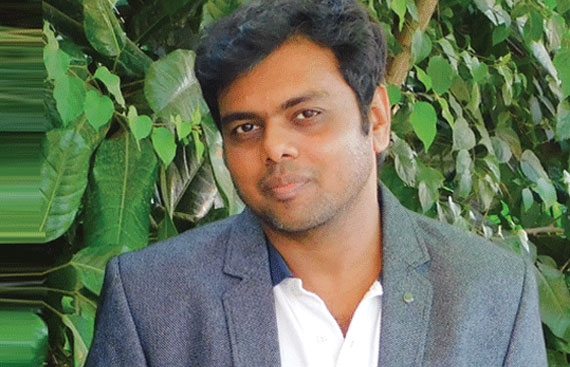Leenesh On The Deep Analysis Of The Gamification Phenomenon

Leenesh is an unconventional speaker, an HR enthusiast and business process consultant. Some of his noteworthy projects are viz., Gamification for Performance Management Systems, adding the fun element on onboarding and induction programmes, engaging candidates on your website via ChatBots.
The Audience
Millennials will reportedly make up 75 percent of the global workforce by 2025. They are different when it comes to the way they think, grasp, learn, and collaborate and work together. The success of eCommerce giants like Snapchat, Facebook, WhatsApp, and Amazon etc gives us enough evidence about the way customer experience has moved leaps ahead. The Human Resources (HR) has to provide millennials with the right experience via Gamification.
Problem Statement
Gallup’s research shows 31 percent of employees are engaged at work (51percent are disengaged and 17.5 percent actively disengaged). But what is most interesting is how this data compares when you apply a generational segmentation. It turns out Millennials are the least engaged generation, according to Gallup, with only 28.9 percent engaged as compared to 32.9 percent for Gen X & Boomers. What’s going on here? Gallup findings segmented by generation point to low engagement among Millennials who say they do not have the opportunity to show their best work or have a vehicle to contribute their ideas and suggestions.
Using gamification to address this can impact not only engagement levels but also help a company become a magnet for best of breed talent. To address this employee engagement crisis, the human resource departments of Fortune 500 companies are launching gamification pilots. In fact, Brian Burke Vice President of Gartner estimates “employee focused gamification applications now exceed customer focused gamification applications.”
The author of Gamification of Learning & Instruction, Karl Kapp, says the key to gamification is how addictive it can become across all generations of people. Kapp believes the advantages that are part of gamification encourage users to stay engaged and interact with each other, building stronger relationships.
How Does Gamification Work?
The power of Gamification works like this: 'It utilizes the competitive streak we all have within us and as we play a game, we become more absorbed and engaged, we feel a greater sense of achievement and are more willing to go the extra mile in either making more effort to choose the right people, or completing more training programs, or even helping employees to stay motivated. And as we progress, we continue to increase our engagement with the game and reach new levels'. The examples below point to three lessons learnt in using gamification to drive increased engagement inside companies:
Think strategy first: Identify and articulate specific business objectives you are trying to achieve with gamification.
In the case of PwC Hungry, it was engaging job candidates in learning more about the firm before they entered the interview process.
Success Stories
1) HR Gamification in Recruitment & Selection Initiatives
Marriott International Inc was an early implementer to test how gamification can be utilized in recruiting the right people. It developed a hotel-themed online game similar to Farmville or The Sims, to acclimatize prospective employees with the Marriott as an organization, the company culture and the hotel industry.
2) Employee onboarding
SAP Career City is another example of enterprise gamification that allows new employees to navigate a simulation game. Unlike like Multipoly, the SAP Career City game is used during the onboarding process for new employees. This uses gamification to help them learn the job responsibilities they need to know. That is different than PwC Multipoly, which is used to narrow down a huge pool of applicants. SAP Career City is an excellent example of the gamification of onboarding employees.
3) HR Gamification in Training & Development
Walmart uses short bursts of gaming to reinforce safety training. Walmart began using gamification two years ago to deliver safety training for 5,000 associates in eight Walmart distribution centers. Gamifying safety training addressed a significant business issue: ensuring a widely dispersed workforce was adhering to safety procedures on the job. The Walmart gaming platform was delivered was in just three-minute gamified applications, which are embedded into an associate’s workflow. Gamification of safety training offers another important benefit: it is competitive and yes, addictive for associates, and before you know it, associates are talking not only about their rankings in the game but the importance of adhering to safety protocols. It’s this “emotional aspect” of gamification that has the deepest benefits to alter employee behavior. Results to date are impressive: a 54 percent decrease in incidents among the eight Walmart distribution centers using gamification.
5) Promotions
5.1) US Army Promotion: The US Army offers one of the best gamification examples for promotion and recruitment. The United States Army uses a first-person shooter game to allow prospective recruitments to test out their soldier abilities. This recruiting gamification has been quite controversial, however, unlike project manager certifications games. This is due, at least in part, to the violent nature of the game. Unfortunately, that is the name of the military game though. Despite criticism, it has still proven effective in increasing recruitment numbers. This is an excellent example of effective gamification for HR departments to consider.
More companies should be examining what is working on consumer sites like stackoverflow. com and khanacademy.org to drive greater levels of collaboration and engagement.
The market for gamification is expected to grow significantly in the next coming years. The Gartner research indicates that by 2015, 50 percent of organizations that deal with innovation processes will gamify those processes, and that more than 70 percent of Global 2000 organizations will have at least one gamified application. So are YOU in for it?.
